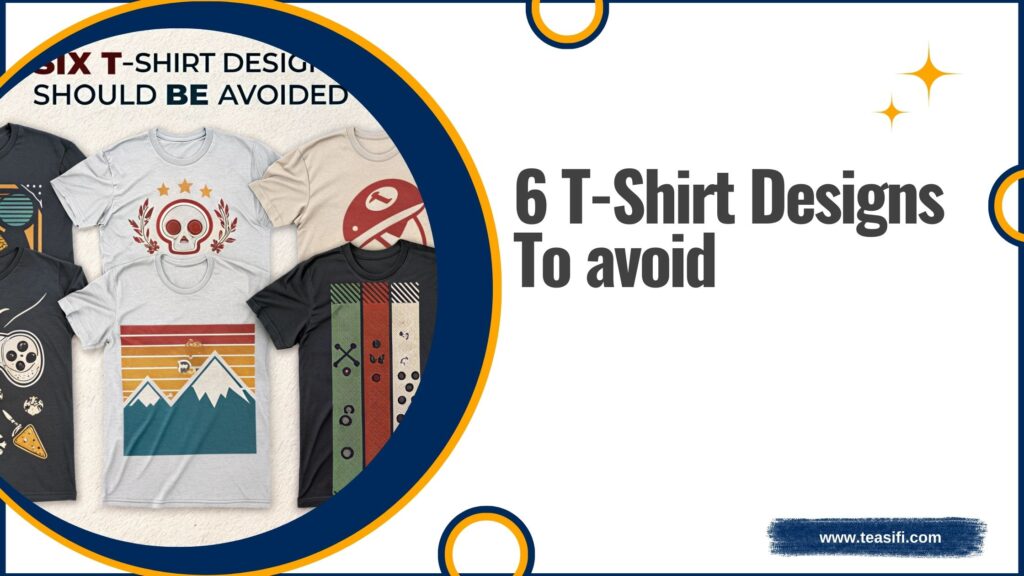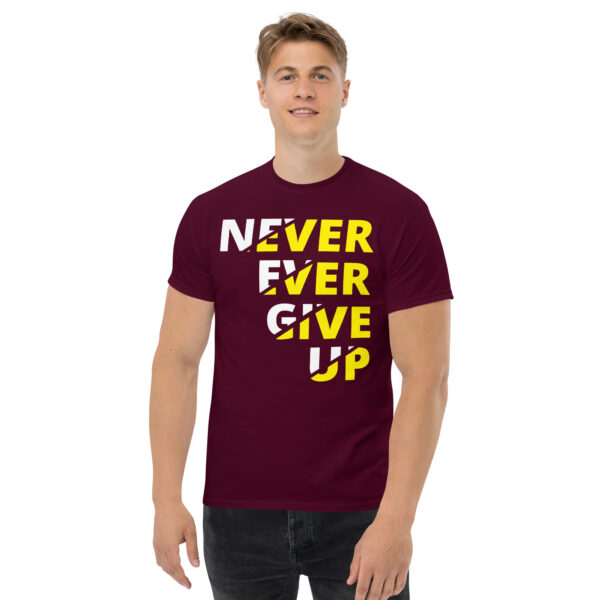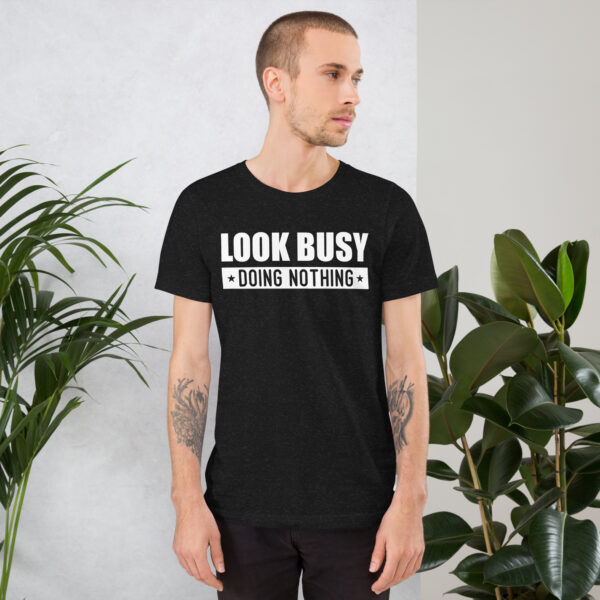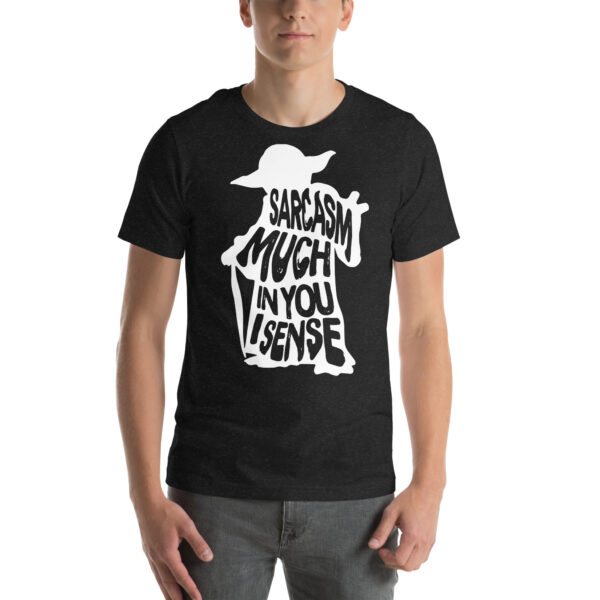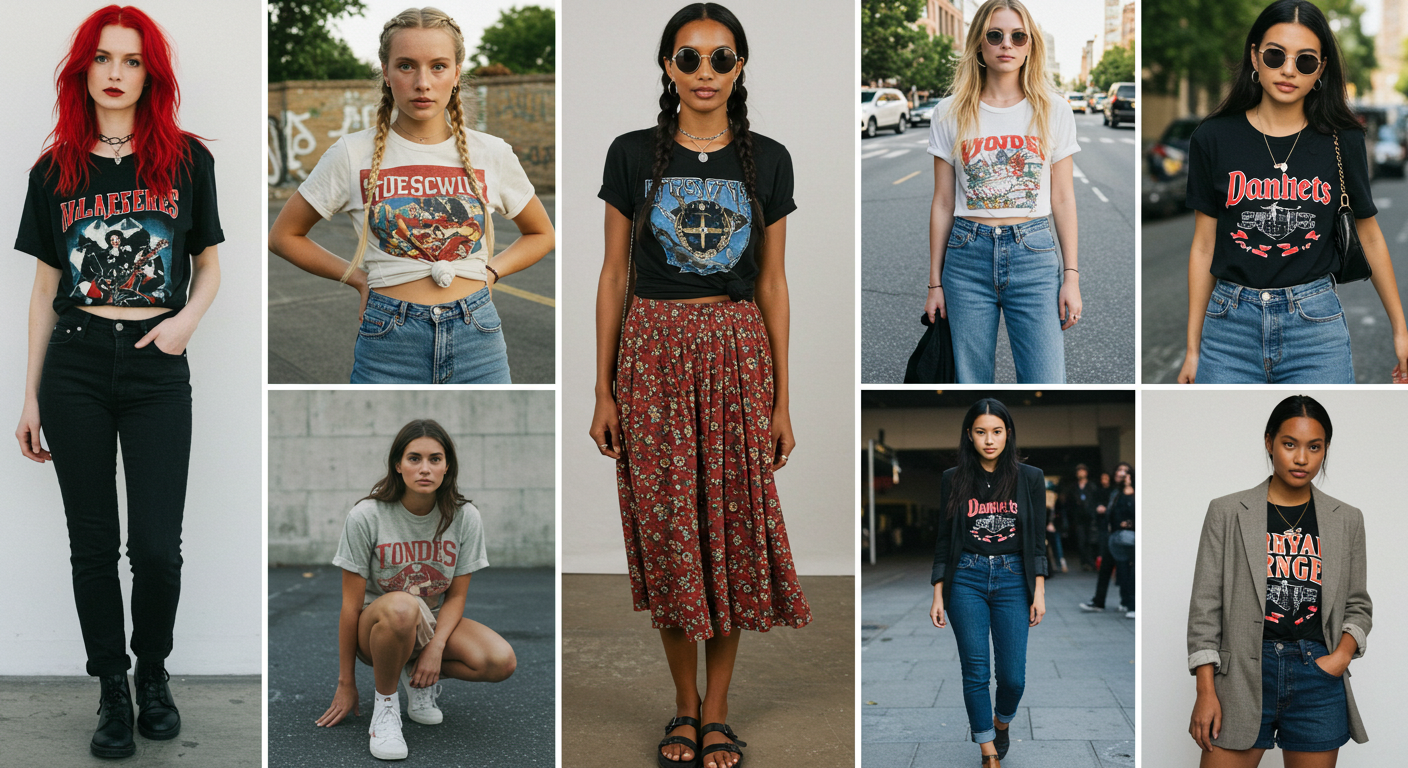For a designer or individual, graphic tees are the most meaningful and expressive medium in my estimation. Your point of view is clearly reflected by your preference for graphic tshirts.
From anyone these two sentences could have come: your Aunt Helen, a fan of gardening in Crocs and ballroom dancing, or even Chad, her son, an expert at skipping school.
But something to keep in mind: these words are from Virgil Abloh, who directed Louis Vuitton’s men’s collections.
This quote emphasizes it: regardless of age, resources, culture, the graphic tee unites people. Your closet is stuffed with them. Still, we assure you we did not break into your home while you were asleep.
Tshirts with holes, tshirts that seem to go back to the French Revolution, tshirts that recall buddies… we’re saying Know this since ours are also there. Put simply, tshirts that we just can&’t have enough of.
In this article we will explore the common mistakes to avoid for your t-shirt design.
Every designer aims to have their garments become the musthaves of their clients. We probably yours too, though we do not want to get ahead of one another.
Only after your visual follows some graphic design rules will your graphic tshirts achieve the triumph you aspire. If not, it will cause errors that will discourage buyers… Just as the nine common mistakes we will cover in this paper define.
Table of Contents
ToggleCommon T-Shirt Design Mistakes & How To Avoid Them
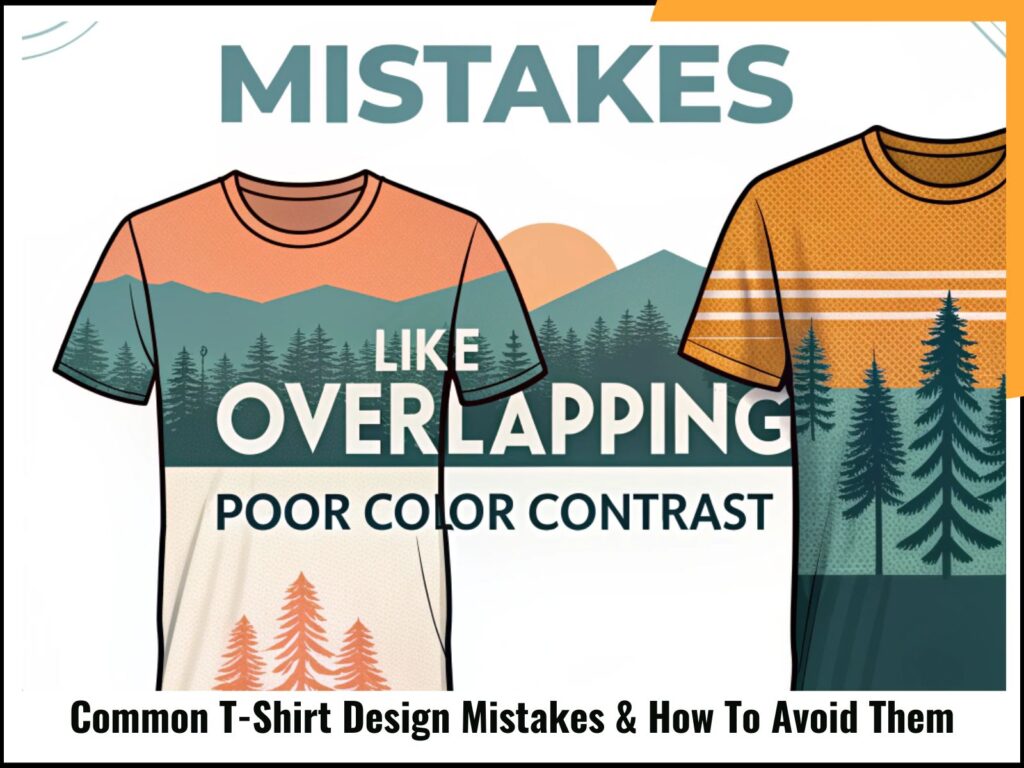
Avoid common T-shirt design mistakes! Learn how to fix poor prints, bad color choices, and low-quality graphics for professional-looking results.
Mistake 1: Setting The Design Midpoint Of The T shirts
Are you in favor of a symmetrical layout? Had very good graphic design instinct; congratulations. As far as the positioning of your graphics on tshirts goes, you’re going to need to let go of that instinct.
Good visual placement isn’t centrally dependent on the width and height of a tshirt, contrary to first appearances. The outcome is a print situated right at belly level. Unless your visual says, precisely, "This is where I digest " it would be far from ideal.
We therefore recommend you to design a print around ten centimeters under the collar and to be modified based on product size (e.g., for a children’s tee) and cut (crop top, tank top, regular, etc.).
Mistake 2: Ignoring The Composition’s Balance
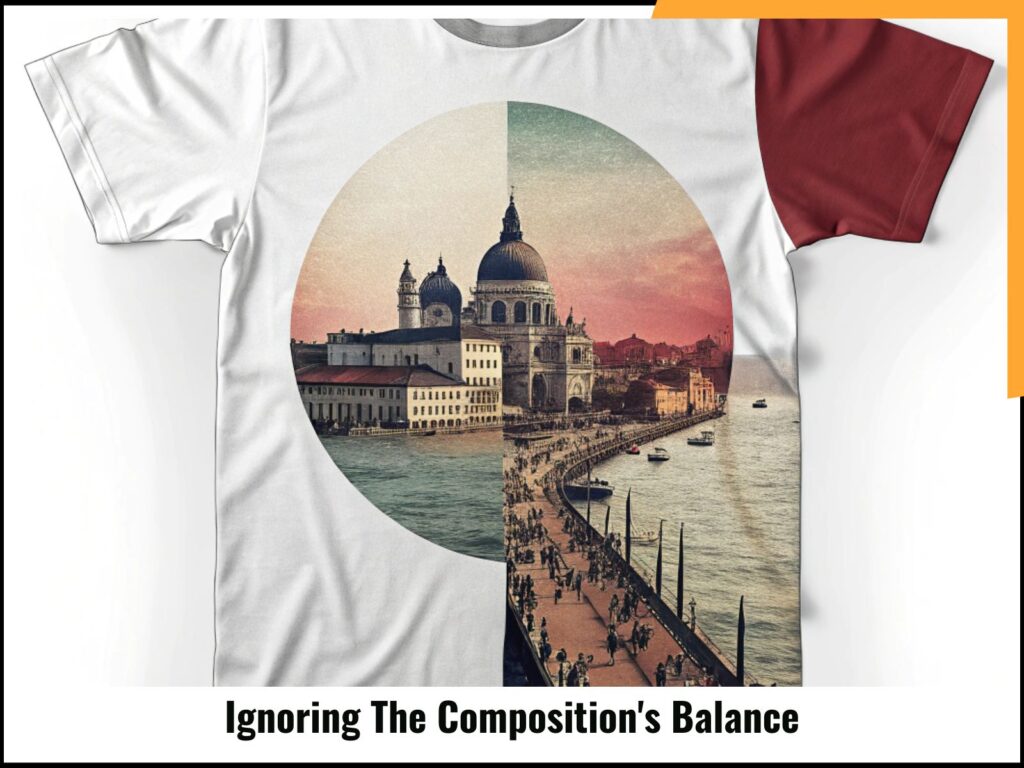
Your ideas are compositions: intelligent combinations of elements—text, pictures, logo—that harmonize in perfect answer. You are a composer: well done, virtuoso you are, whether they are compositions or not. Conversely, some minimal visual work is required with regard to certain basic principles if you wish to be Ludwig van Beethoven rather than Lou Bega.
Space the components apart enough that the sight can be readable, without unnecessarily far spaced, at risk of the whole compile disjointed would be about;
Arrange the components in the order of reading (it seems clear, but sometimes you become so much in the creation that you can very easily forget fundamentals).
Since it is difficult to distance yourself from your vision, do not be afraid to ask for a new perspective on your work from a friend, family, Aunt Helen, or even Chad.
Mistake #3: Not Mastering your Choice Of Fonts
A graphic t shirt brings to mind images more than words. But still, Graphic design depends a lot on typography. Just look at the ridiculous popularity of message t shirts to see this! They are practically everywhere.
Adding a message to your tshirt design is also a fast and simple way to make it mean at the same time. Even so, you have to get your typography perfect. Because there are always some regulations to adhere to.
Managing font spacing, including between letters and lines and between letters.
Should there be sentences in capitals, select a font that looks nice in this form, calligraphic styles are typically unsuitable.
With just one design, combine a most of two complimentary fonts (for example, Sans serif and serif).
Avoid using Comic Sans MS,
Definitely not use Comic Sans MS. This has got to be done.
We understand, working with all these graphic design concepts can be exasperating. Trust us, it’s not a bad thing, their only purpose is to guarantee you get the most from it!
Mistake 4: Thinking (Much) Large

According to a philosopher, the more you put on, the more you have. We don’t know much about it unless it is an advertisement with a questionable message. Regardless, this quote does not relate to tshirt design.
Your graphic beauties should be seen, yes, but not from across the continent. We therefore advise you to be moderate in terms of the size of your design and make it a bit under the maximum allowed by our customizer, and especially in regard to children’ size t shirts.
There are two reasons not to print too big, to keep the harmony of the whole, again and again, but also to maximize the comfort of the garment. That is correct, let us not neglect that printing adds a layer to the t-shirt.
A thin layer very nice to the touch, yes, but a layer nonetheless that will be felt even more if the basis product is thin.
Mistake 5: Unlimited Color Palettes
Working with small color schemes is absolutely necessary, let’s admit it. Just because you can print a wonderful rainbow of colors does mean that you should, nevertheless, our DTG technology allows for this and only for that reason is a solution we are very proud to present to you! Think back to when you tried eating dog food. It wasn’t great. A visual mixing over four different colors, either.
Several aids exist for you to discover the winning combination for your next graphic star. For instance, this will help you find the soul mate of a hue you have picked previously.
This one will create excellent palettes at random.
And don’t forget to coordinate the colors of your design to the fabric on which it will be printed. Deciding factor!
Otherwise, from there, you leave yourself free rein, do not brood.
Mistake 6: Neglect Of Counterpoints
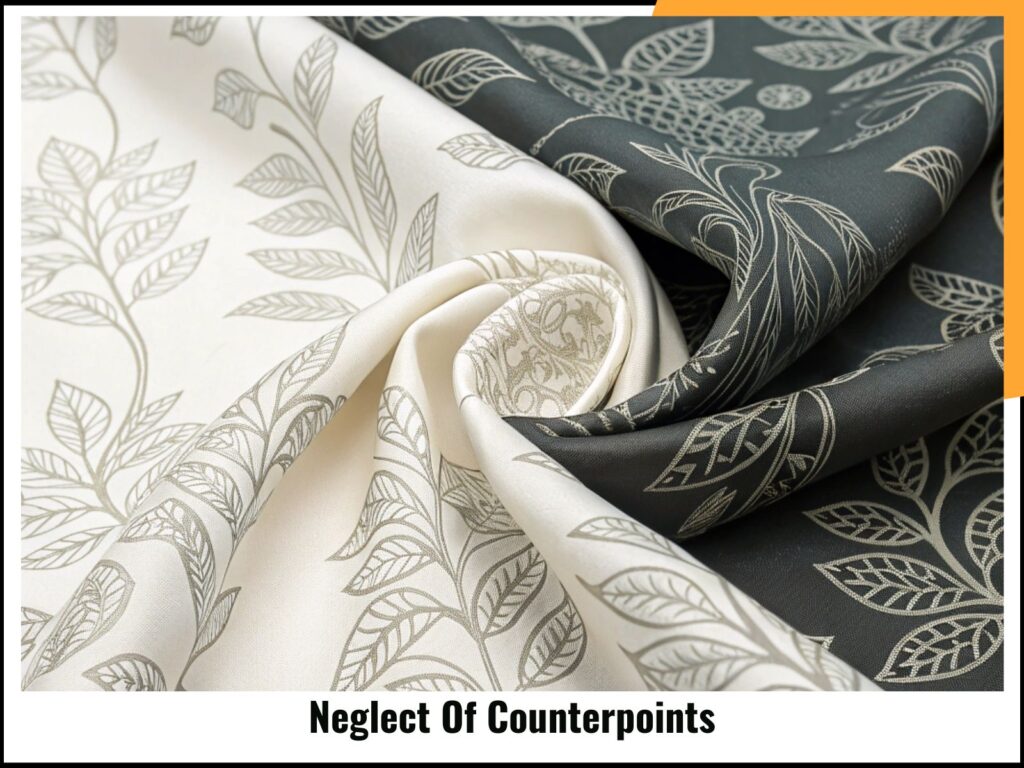
To be practical, what does contrast mean?
It’s the extent of variation between the light and dark parts of a collection. Let us admit it: Readability is a friend of the best. Here is some photographic proof:
Thus, the contrast will stop you from printing white (or any color too light, of course) on a light fabric. This particular monochrome printing is sometimes asked. Sure, it is unique. Except perhaps it is original for a reason.
No one wants their shirts to be interpreted in public on the street like this.
Some tools, like this one, are especially meant to analyze the difference between two colors (it was produced for digital use, but it would still provide you with some concept for your printed materials).
Mistake 7: Leaving A Visual As It Is Along The Borders
Print on Demand is a platform that praises simplicity. For yourself, we are dry, have you ever observed a simpler way to start your brand?
To some extent, we embrace simplicity. If, for example, you wish to base your visual on a photo or any visual having background, we advise you to turn its primary element so the final is rather more on point, observe yourself.
Not so long ago, only the most experienced graphic designers could erase a design’s background. We’re discussing current ones who might spend two hours in Photoshop cutting a form while tugging 500 percent on their visual and their eyes watering.
Thankfully, those times have passed. Among free tools created to crop a shape in one click are Photoroom and Removal. You have a whole new world open to you.
Mistake 8: Over Designed
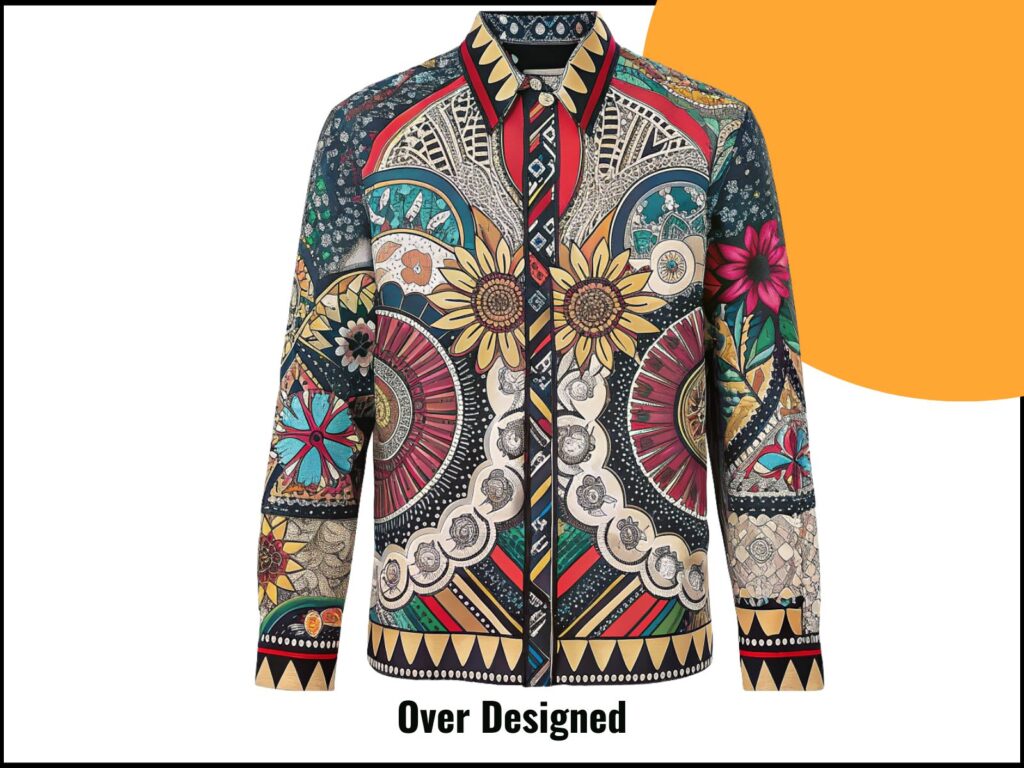
As we have seen previously: it is not wise to overdo things. The size of your visual, your font selection, or your consumption in front of your inlaws all apply. This applies as well to the components of your tshirt design as a total.
The human eye is meant to spot a certain quantity of symbols at one go,no more. So, let’s keep it easy. Too many ideas, never enough room? Break a thick idea into several layouts to maximise this. You can run this type of test without endangering yourself using Print on Demand.
Mistake 9: Not Visually Centering
Sometimes the center isn’t really the center; here’s a fact.
Let’s define it, it’s known in design as the visual center. As its name implies, it is separated from the geometric middle of a visual, which is right in the geometric center. The main focal point the eye will stop at while looking at a visual defines the visual center.
You ask how to find this visible center? We’ll present it to you in thousands.
There is as well a tool for this.
As seen below, this website will help you to upload your design so to find its visual center:
The character will draw the eye; the center has been moved to approach it. We understand that this is not an easy idea to grasp, but this instrument should provide you with the required support to make your visual even more appealing for the eyes of your prospective clients.
Creativity is like our hair when we arise; it is original and energetic, but some discipline, once in a while, doesn’t kill. The purpose of design is that you have fun, but also that the outcome appeals to your intended audience, thus some codes are vital for your target to understand you.
Conclusion
Designing the perfect graphic t-shirt requires a balance between creativity and key design principles. Avoiding common mistakes, such as improper placement, excessive colors, poor font choices, and lack of contrast, ensures that your design is both visually appealing and marketable.
By refining composition, centering visuals effectively, and considering comfort, you can create t-shirts that resonate with your audience.
Whether you’re a beginner or an experienced designer, following these guidelines will help you craft standout designs that not only look great but also sell well. Keep experimenting, stay mindful of design fundamentals, and enjoy the creative process!
FAQ – Mistakes to Avoid for Your T-Shirt Designs
Q1: What are the most common mistakes to avoid in T-shirt designs?
Some of the biggest mistakes in T-shirt design include using low-resolution images, choosing the wrong fabric for printing, overcrowding the design with too many elements, ignoring color contrasts, and not considering print placement. To create a high-quality T-shirt design, use vector graphics, test color combinations, and ensure your artwork is properly sized for printing.
Q2: How can I make sure my T-shirt design prints clearly?
To ensure a sharp and professional print, use high-resolution images (at least 300 DPI) and vector files whenever possible. Avoid overly intricate details that may not translate well onto fabric. Also, work with a reliable printing service that uses quality ink and materials for the best results.
Q3: What colors work best for T-shirt designs?
The best color combinations for T-shirts depend on contrast and readability. Light-colored designs work well on dark shirts, while bold or dark designs stand out on lighter fabrics. Always check how colors will appear on different materials and use color-matching guides like Pantone to ensure accuracy.
Q4: How do I choose the right font for my T-shirt design?
Pick a font that matches the style and message of your design. Avoid overly decorative or hard-to-read fonts, especially if your text is small. Stick to bold, simple fonts for better readability, and always test how the typography looks when printed on fabric.
Q5: Why do T-shirt designs sometimes crack or fade after washing?
Cracking and fading usually happen due to low-quality printing, incorrect curing processes, or poor fabric choices. To prevent this, choose high-quality ink and printing techniques like screen printing or direct-to-garment (DTG). Wash printed shirts in cold water, inside out, and avoid harsh detergents or high heat when drying.
Q6: What is the best printing method for T-shirt designs?
The best method depends on your needs:
- Screen Printing – Ideal for bulk orders and vibrant colors.
- DTG (Direct-to-Garment) – Best for complex, colorful designs with fine details.
- Heat Transfer Vinyl (HTV) – Good for small custom designs but less durable.
- Sublimation Printing – Works well on polyester but not on cotton.
Choose based on durability, cost, and the type of design you want.

